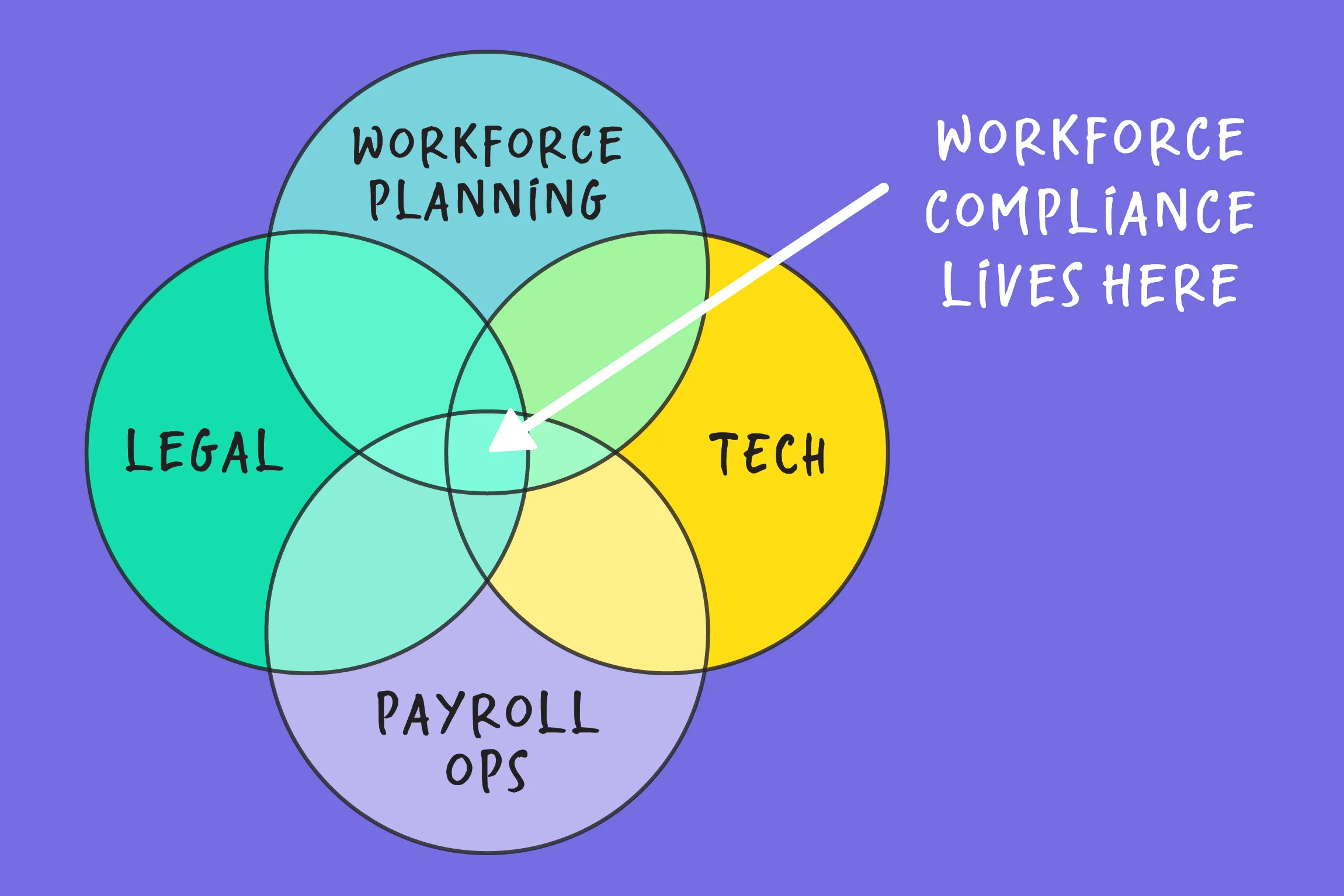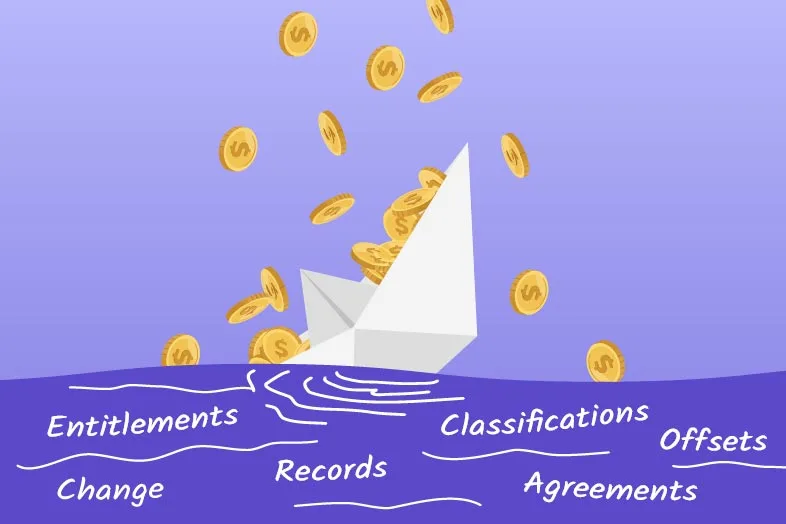So, you have technology with baked-in compliance features, a stellar payroll team, and brilliant in-house employment and industrial relations folk at your fingertips. Why on earth do you have to keep checking that you are complying with workplace obligations? In short, the answer is that consistently getting workplace compliance right is a highly complicated and ever-evolving process. Regular compliance checking is essential to ensure employers are meeting their obligations correctly and not allowing issues to compound over time. Being able to properly perform these checks requires an understanding of the key drivers of compliance breaches.
The four functions of workplace compliance
The intersection of four key business functions - legal, workforce planning, technology and payroll – are, in essence, what makes up workplace compliance.
To gain a full picture, it is important to understand each function at a high level:
- Legal: the primary role of this function is to determine the rules that govern workplace compliance. These rules hail from the interpretation of several different sources; primarily modern awards, enterprise agreements, both federal and state legislation, and employment contracts. What, in turn, informs the principles behind this interpretation is the ever-evolving beast known as the common law.
- Workforce planning: broadly speaking, workforce management refers to the tasks involved in having the right people with the right skills in the right place at the right time. Critically, this function addresses how a company deploys its workforce (read: rostering and shift planning).
- Technology: the provision and maintenance of the technical systems in place at an employer, chiefly governing payroll and time and attendance.
- Payroll operations: at its core, payroll disperses payments to employees. Generally, they are also responsible for updating payroll systems to account for various workplace changes, including amendments to industrial instruments, employee classifications, changes in shift patterns - the list goes on.
The crux: lack of integration between business functions and structural deficiencies
Lack of integration
Whilst there is absolutely room for error within each function, there are two key reasons why workplace compliance breaches occur.
Firstly, breaches are due to a lack of interaction and integration between the four functions noted above. Common and potentially disastrous complications that stem from this issue are:
- Critical updates to industrial instruments, legislation, and ever evolving common law interpretation principles not making their way into payroll systems.
- Rostering and shift planning failing to integrate, and account for, the terms of any applicable industrial instrument(s). For example, ensuring that there are senior staff rostered for as many hours as possible to help reduce entitlements to a higher duties allowance for other employees.
- Checking your own homework: despite inbuilt compliance capabilities, one of the biggest issues employers face is the concept of checking their own homework. In other words, a system that processes your payroll will check that it has been processed in accordance with its programming. And therein lies the rub (or, more accurately, the infinite compliance breach-inducing loop).
- Application of the right rule in the wrong circumstances: let’s look at a 150% overtime rate versus a 150% shift penalty. Ultimately, a 150% calculation will be applied, meaning the employee will be paid the same amount, and no wage gap will be immediately evident. The kicker, however, is that the shift penalty attracts superannuation, whereas overtime does not.
- Misclassification of employees: the relationship between an employee’s duties and their classification under a relevant industrial instrument is constantly evolving and is informed by several of the four functions. Take for example an employee performing higher responsibilities. A legal team is aware that these higher duties could alter the employee’s classification, but they are unaware that they are performing them. Management knows they are performing the higher duties, but not that it can alter their classification and subsequent pay and entitlements.
- Flaws in technology programming: payroll systems generally conduct themselves on a pay period by pay period basis, with each being treated as a distinct period. This means that a payroll system will interpret an industrial instrument as it pertains to a particular pay period. The result is that applicable pay rules often fall between the cracks. Take for example, a system configured to fortnightly pay periods. There are rules built into the technology that can be triggered over a 28-day period. However, the fortnightly configuration won’t trigger it, as it is processing two 14-day periods rather than one 28-day period.
Structural deficiencies
The second key element in why compliance breaches commonly occur is organisational structural deficiencies in how workplace compliance is viewed. At present, compliance is seen as a one-way disbursement mechanism; a way to get money from point A (the employer) to point B (the employee). It is not designed with the view that you would ever have to go back and audit what has been done or create a historical chronology to determine if what has transpired is actually correct.
The solution: integration, a shift in mindset, and employee empowerment As is often the case with complex corporate issues, an initial solution may be to replace or change the technology. Whilst this may happen down the line, the imperative first step is to engender a shift in mindset from workforce compliance being a means to get payments out the door, to one of ensuring ongoing compliance. Emphasis on ongoing! Another critical aspect is building visibility and integration across the four key functions. Whilst delegating the responsibility to a few key stakeholders is a good starting point, the workplace compliance liability net is being cast too far and wide for this to be a truly effective approach. Ideally, it requires a change to organisational infrastructure and the training and empowerment of employees to ensure that everyone is aware of their obligations and how their actions inform the other functions. This should be a top-down approach – with CEOs, board members, senior managers, and the HR function taking the lead and setting a culture of compliance that flows down.





